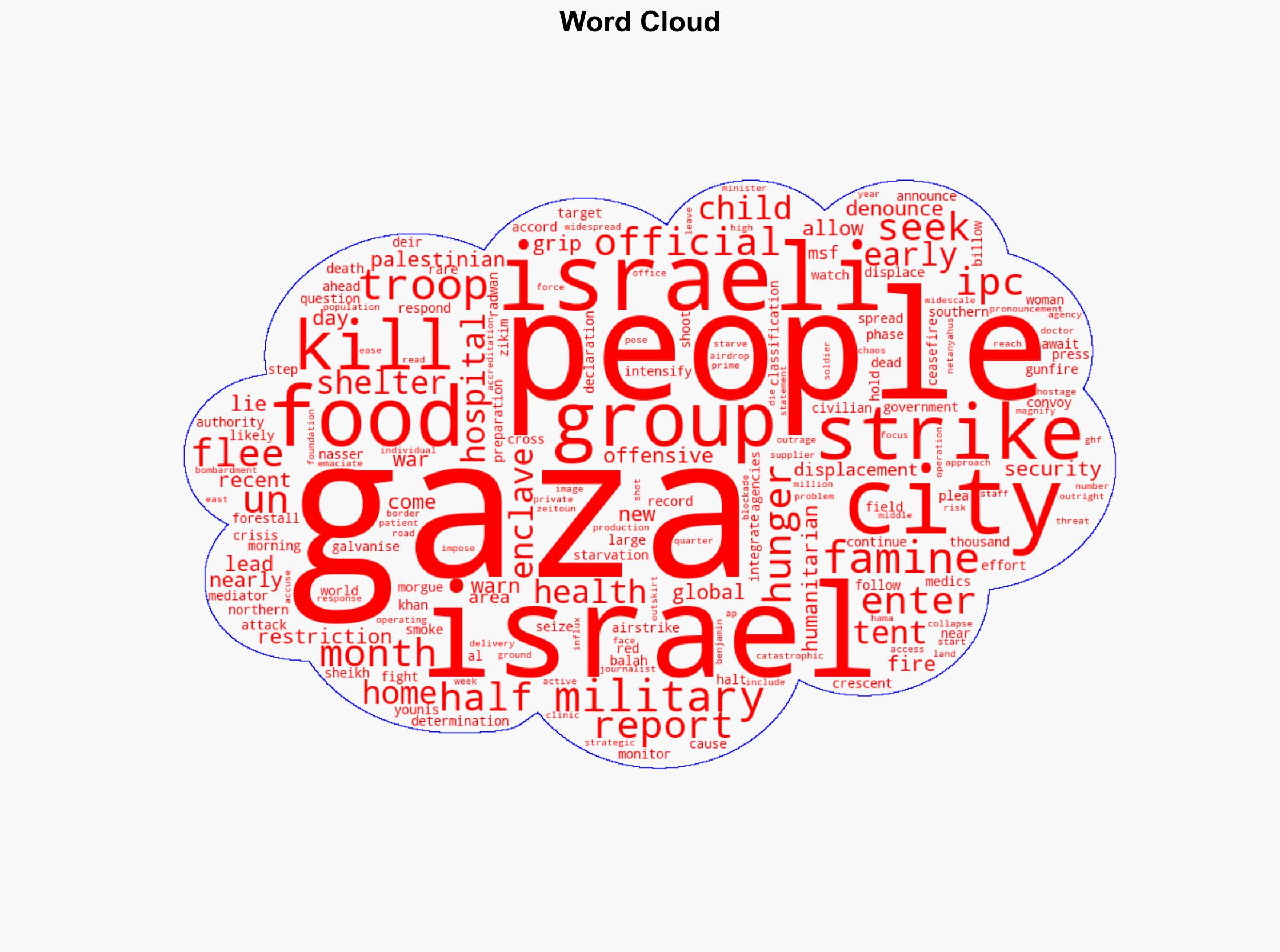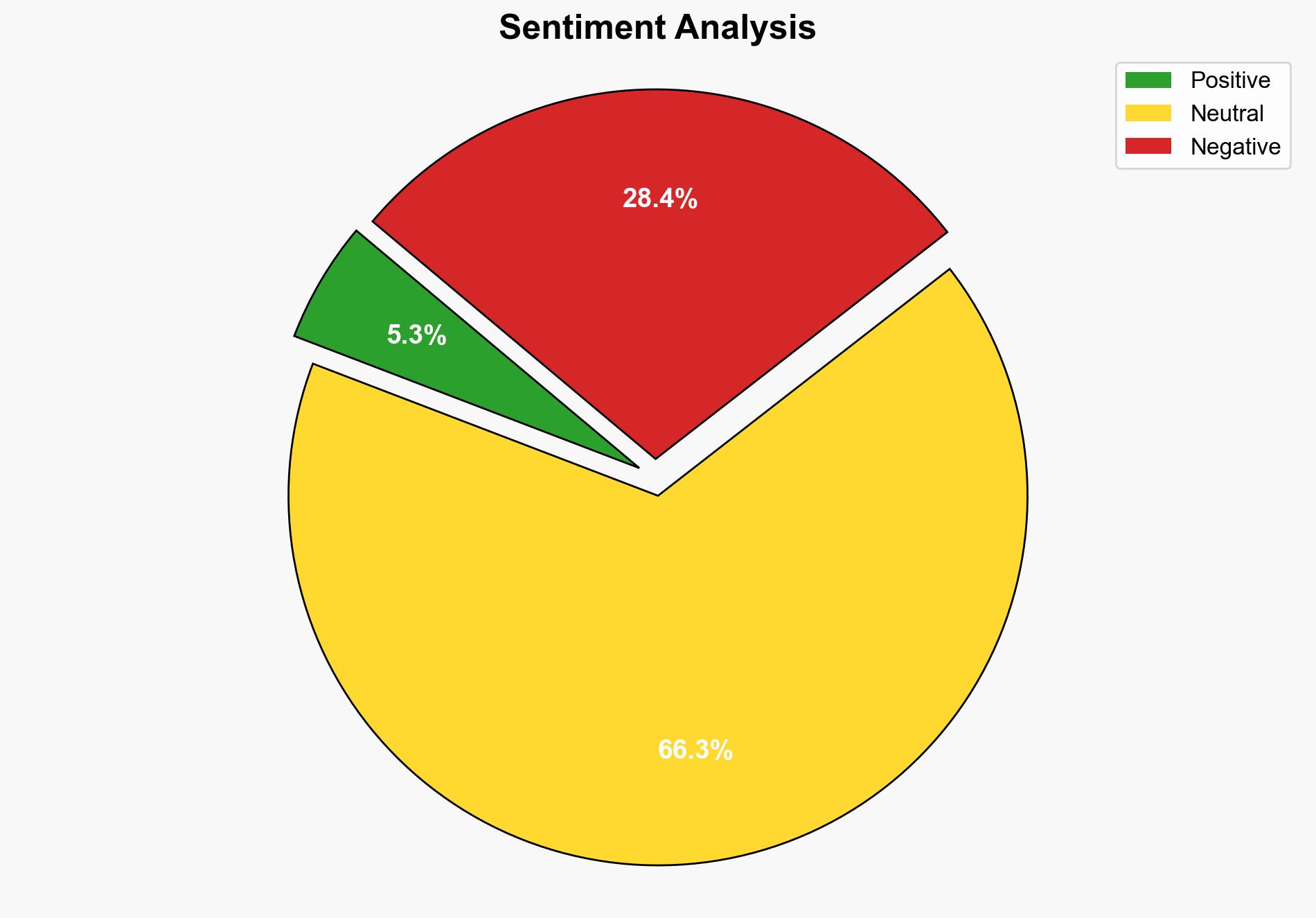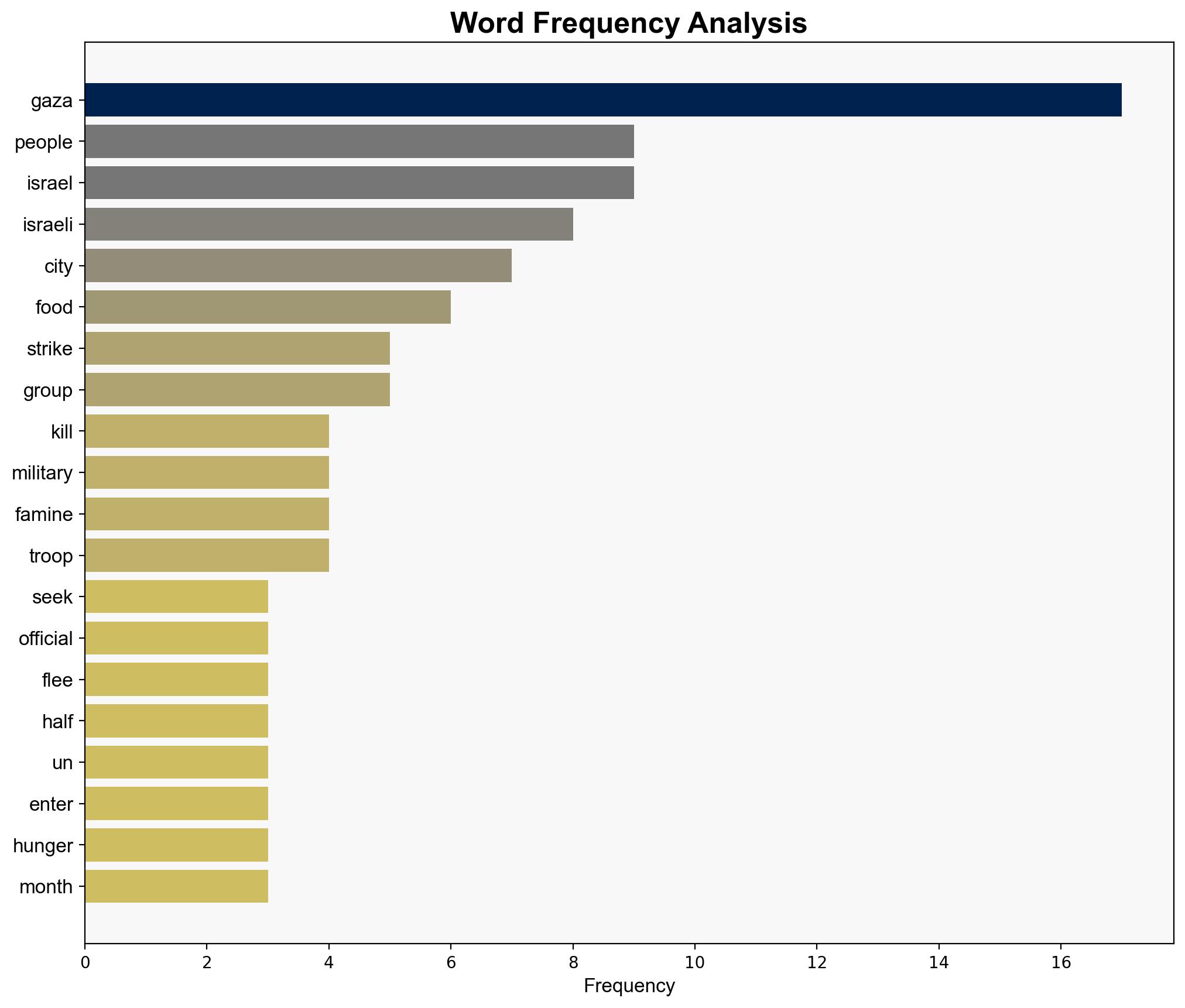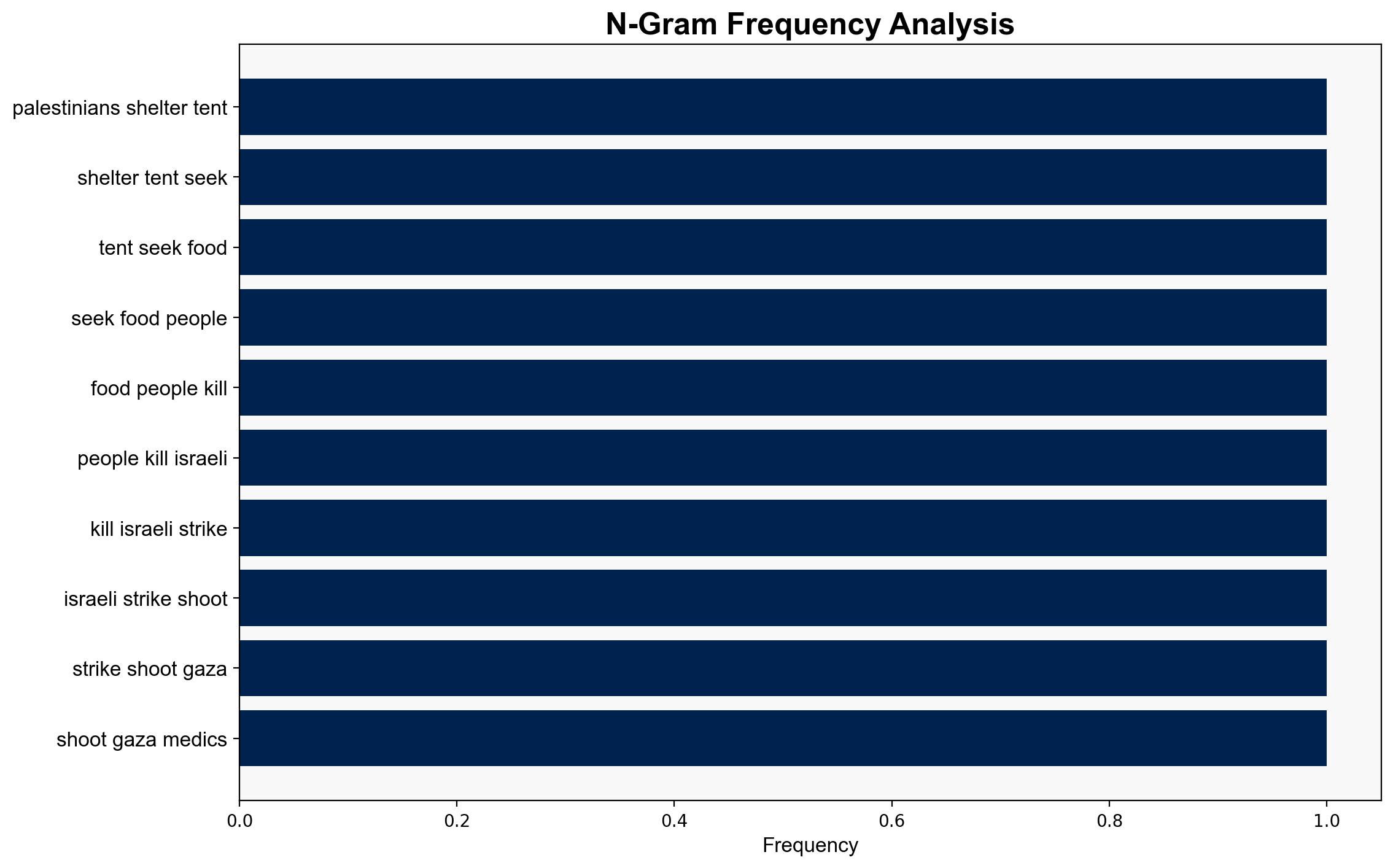At least 25 killed in Israeli strikes in Gaza say medics – RTE
Published on: 2025-08-23
Intelligence Report: At least 25 killed in Israeli strikes in Gaza say medics – RTE
1. BLUF (Bottom Line Up Front)
The most supported hypothesis is that the Israeli strikes in Gaza are part of a broader military strategy aimed at weakening Hamas’s operational capabilities, despite international pressure and humanitarian concerns. Confidence level: Moderate. Recommended action: Engage in diplomatic efforts to mediate a ceasefire while addressing humanitarian needs to prevent further escalation.
2. Competing Hypotheses
1. **Hypothesis A**: The Israeli strikes are primarily a tactical response to immediate threats posed by Hamas, focusing on military targets to degrade their capabilities.
2. **Hypothesis B**: The strikes are part of a broader strategy to exert political pressure on Hamas and the Palestinian Authority, leveraging military action to influence political negotiations.
Using the Analysis of Competing Hypotheses (ACH) 2.0, Hypothesis A is better supported by the evidence of targeted strikes and the Israeli military’s statements about threats. Hypothesis B is less supported due to the lack of direct evidence linking strikes to political negotiation strategies.
3. Key Assumptions and Red Flags
– **Assumptions**: Assumes Israeli military actions are solely based on security concerns and not influenced by political agendas. Assumes reported casualties are accurate and not inflated for propaganda.
– **Red Flags**: Potential bias in casualty reports from medics and humanitarian organizations. Lack of transparency from Israeli military on specific targets and objectives.
4. Implications and Strategic Risks
– **Escalation Risks**: Continued strikes could lead to broader regional conflict, drawing in neighboring countries or non-state actors.
– **Humanitarian Impact**: Intensified strikes may exacerbate the humanitarian crisis, leading to increased displacement and international condemnation.
– **Geopolitical Dynamics**: Strains on Israel’s diplomatic relations with allies and potential shifts in regional alliances.
5. Recommendations and Outlook
- Facilitate dialogue between Israel and Palestinian representatives to establish a ceasefire.
- Coordinate with international organizations to ensure humanitarian aid reaches affected areas.
- Scenario Projections:
- Best Case: Ceasefire achieved, humanitarian aid flows, and negotiations resume.
- Worst Case: Escalation into a wider conflict involving regional actors.
- Most Likely: Continued military operations with intermittent diplomatic efforts.
6. Key Individuals and Entities
– Benjamin Netanyahu
– Hamas leadership
– Palestinian Authority representatives
7. Thematic Tags
national security threats, regional focus, humanitarian crisis, military strategy





